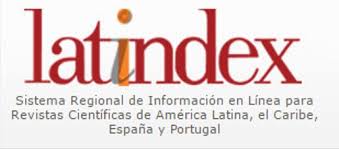Was I, then, a monster (…)? La criatura como el Prometeo moderno en Frankenstein, de Mary Shelley
Resumen
El presente trabajo se propone estudiar la evaluación de lo monstruoso y lo humano a partir de la naturaleza y función del conocimiento en la novela de Mary Shelley. Frankenstein propone dos modelos de acceso y producción del saber, cuyo criterio de distinción es el reconocimiento de su dimensión relacional y social como definición de lo humano. En el desarrollo narrativo de esta diferenciación, es la criatura quien emerge como un Prometeo moderno que se opone a la pedagogía de la objeción en la que se forma su creador, el científico Víctor Frankenstein, y que hace de él un mero técnico –Petty experimentalist–.
Palabras clave
Texto completo:
PDFReferencias
Asma, Stephen (2009). On Monsters: An Unnatural History of Our Worst Fears. Oxford University Press.
Baldick, Chris (1987). In Frankenstein’s Shadow. Myth, Monstrosity and Nineteenth-century Writing. Clarendon Press.
Beal, Timothy (2002). Religion and Its Monsters. Routledge.
Botting, Fred (1991). Making Monstrous: Frankenstein, Criticism, Theory. Manchester University Press.
----------- (1996). Gothic. Routledge.
Butler, Marilyn (1981). The Arts in an Age of Revolution. 1760-1790. Oxford University Press.
Cohen, Jeffrey Jerome (1996). Monster Theory. Reading Culture. University of Minnesota Press.
Davies, Surekha (2013). “The Unlucky, the Bad and the Ugly: Categories of Monstrosity from the Renaissance to the Enlightenment”. En Dendle, Peter J. y Mittman, Asa Simon (eds.), The Ashgate Research Companion to Monsters and the Monstrous. Ashgate, pp. 49-76.
Fiedler, Leslie (1979). Freaks: Myths and Images of the Secret Self. Simon and Schuster.
----------- (2024). La tiranía de lo normal. Traducción de Cecilia Lasa. Prometeo.
Freud, Sigmund (1992). “Lo ominoso”. En Obras completas. Tomo XVII. Traducción de José Luis Etcheverry. Amorrortu editores, pp. 215-252.
Ledesma, Jerónimo (2006). “Introducción”. En Shelley, Mary (2006). Frankenstein. Traducción de Jerónimo Ledesma. Colihue, pp. I-CXV.
Mellor, Anne (1989). Mary Shelley: Her Life, Her Fiction, Her Monsters. Routledge.
---------------- (2007). “Making a Monster”. En Bloom, Harold (ed.), Mary Shelley’s Frankenstein. Chelsea House Publishing, pp. 43-60.
Mittman Asa Simon (2013). “Introduction: The Impact of Monsters and Monster Studies”. En Dendle, Peter J. y Mittman, Asa Simon (eds.), The Ashgate Research Companion to Monsters and the Monstrous. Ashgate, pp. 1-15.
Randel, Fred V. (2007). “The Political Geography of Horror”. En Bloom, Harold (ed.), Mary Shelley’s Frankenstein. Nueva York: Chelsea House Publishing, pp. 185-212.
Shelley, Mary (1994). Frankenstein. Penguin.
(2006). Frankenstein. Traducción de Jerónimo Ledesma. Colihue.
Zimmerman, Lee (2007). “Frankenstein, Invisibility and Nameless Dread”. En Bloom, Harold (ed.), Mary Shelley’s Frankenstein. Chelsea House Publishing, pp. 213-234.
Enlaces refback
- No hay ningún enlace refback.
Copyright (c) 2025 Cuarenta naipes

Este obra está bajo una licencia de Creative Commons Reconocimiento 4.0 Internacional.
 |
ISSN 2718-6571 (en línea)
|
La Dirección no se responsabiliza por las opiniones vertidas en los artículos firmados. | |
| Incluida en: | |
 | BASE (Bielefeld Academic Search) Link |
 | Latin Rev Link |
 | Latindex Directorio Link |
 | Directory of Research Journals Indexing (DRJI) Link |

